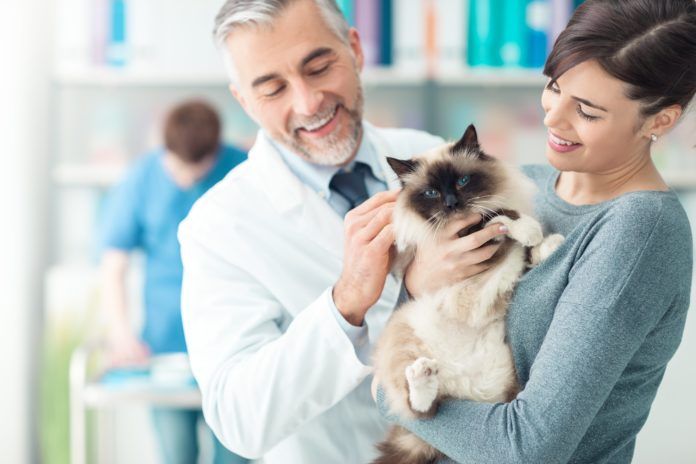Dreamstime.com

During the past half-century, the overall health of domestic cats has benefited immensely from the development of antibiotics — drugs that kill bacteria or at least reduce their ability to replicate. Administered orally, topically or by injection, antibiotics are commonly used by veterinarians to treat a vast array of bacteria-caused feline health problems, including salmonellosis, tuberculosis and bacterial hepatitis, as well as infections resulting from bite wounds, which, notes Dr. Michael Stone, DVM, are the most commonly observed causes of bacterial infections occurring in cats.
Among all antibiotic medications, says Dr. Stone, who is a clinical professor of small animal medicine at the Cummings School, the most frequently prescribed are penicillin-based medications — such as amoxicillin — which are used to treat infections of the respiratory tract, urinary tract, skin, ears and nose. Overall, he points out, the track record of antibiotic medicines is excellent. “Modern antibiotics are remarkably effective, with few side effects,” he says. “However, no medication is 100 percent safe, and adverse effects are always possible.”
Bacterial diseases can occur at any stage of a cat’s life. Kittens may be exposed to dangerous bacteria before all of their natural defense mechanisms have become fully functional, and some mature cats can be at elevated risk for infection due to immune system deficiencies. In cats of all ages, three factors combine to either increase or decrease susceptibility to bacterial infection: an animal’s overall physical health; the characteristics of the bacteria; and such influences as stress and poor nutrition.
How resistance happens
Unfortunately, the sterling track record of antibiotic efficacy has been diminished in recent decades by a phenomenon called “resistance,” which can undermine the usefulness of antibiotics against some bacterial species. Resistance occurs when bacteria evolve and change over time in a way that reduces the effectiveness of an antibiotic that is normally expected to be effective.
In some cases, the bacteria develop the ability to neutralize the antibiotic. In other instances, a few of the causative bacteria somehow manage to survive the effect of the antibiotic drug, after which they can proceed to multiply and replace all of the bacteria that had been killed by the antibiotic. The surviving bacteria then continue to reproduce. The antibiotic-resistant bacteria can spread from the initially infected cat to other cats.
“Resistance implies that any surviving bacteria are less susceptible to being killed by an antibiotic,” explains Dr. Stone. To make matters worse, bacterial organisms that resist the effects of an antibiotic may have a reproductive advantage over those organisms that succumb to it.
Of particular concern is the emergence of bacteria that are resistant to multiple antibiotics. Says Dr. Stone: “In some cases, bacteria are resistant to one or two different classes of antibiotics, such as penicillins, tetracyclines or sulfa drugs. In most cases, we can use a different, stronger antibiotic to treat a resistant infection. But in rare cases, bacteria — we call them ‘super bugs’ — have evolved to become resistant to all antibiotics. And the infections they cause are often very difficult to treat.”
The MRSA problem
Perhaps most notorious among these super bugs is methicillin-resistant staphylococcus aureus (MRSA), a bacterium that causes infections in many parts of the feline body, most frequently a cat’s skin. While most MRSA infections are not serious, they may have life-threatening implications if they affect an animal’s bloodstream, lungs, or urinary tract.
Moreover, this bacterium can potentially infect other animals in a household and possibly humans who come into direct contact with a MRSA-harboring cat’s urine or saliva, although Dr. Stone notes that “these bacteria are generally not contagious to people.”
Vaccinations as protection
All cat owners — in concert with their veterinarians — should make sure that their animals are protected to the fullest extent possible against infectious diseases through the use of vaccinations. Most vaccinations are intended to prevent viral diseases; however, many viral infections can lead to secondary bacterial infections.
If a cat fails to respond to a properly administered initial round of antibiotic treatment, a vet is likely to run a culture and sensitivity test to determine other types of bacteria that may be causing the infection, for which alternative antibiotics might prove useful instead.
Of course, it’s up to a cat’s owner to see that the entire round of any prescribed antibiotic is given precisely as instructed. Some side effects associated with antibiotic treatment may occur, such as vomiting, diarrhea and loss of appetite. “But these side effects typically resolve,” Dr. Stone points out, “when the round of antibiotics has been completed.” — Catnip staff




